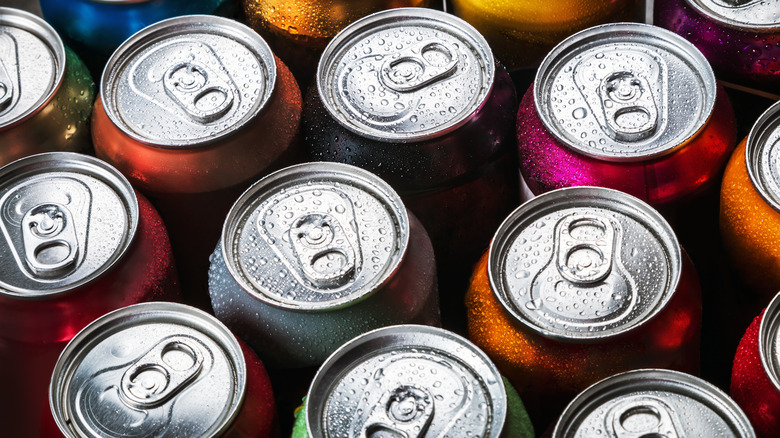The Reason Hawaiian Soda Cans Look So Different
As explained by the Washington Post, Ermal Fraze was inspired to create the modern beverage can in 1959 when he had to use a car bumper to open his beer. Despite Fraze's effective design, the aluminum can went through several changes over the years, including the introduction of a 206 Diameter can in 1987. However, most of the U.S. replaced the 206 can with 202 and 204-style cans in 1991, as the smaller diameters required less metal. The exception is Hawaii, where you can still find the old-fashioned 206 Diameter designs from numerous beverage manufacturers.
It's no secret that Hawaii does things a little differently than other parts of the country. For instance, food and beverage costs in Hawaii are a lot higher because many items must be brought in from the mainland. That means higher transportation costs compared to the contiguous U.S., and these higher costs are reflected in higher food prices. This situation is partly responsible for the state's continued use of the 206 Diameter cans.
In Hawaii, locally sourced goods are less expensive
It's pretty easy to distinguish the 206-style cans from their slimmer counterparts. In addition to the larger diameter, 206 cans have four ridges at the top, which you will find under the much thicker lid. They also have a longer neck. This design is now synonymous with Hawaii-based beverage manufacturers, who typically face more reasonable operational costs.
When it comes to beverages and food in the Aloha State, there's often no getting around elevated prices. Local manufacturing companies are the exception, of course, as they don't need to factor in the costs of shipping items by air or boat. As a result, these local businesses have continued to use the production equipment necessary to produce 206 Diameter cans. Reduced shipping costs mean more money for production, so the added price for extra aluminum is not as big an issue here. Additionally, the larger diameter cans are beneficial from a safety perspective, which can be dangerous if you accidentally cool your beverages in the freezer instead of the fridge before drinking.
Despite the cost, old-fashioned soda cans are worth it
More aluminum in the design means a more reliable can, as the features of Hawaii's preferred 206 Diameter cans make for a more robust product overall. The increased lid width and special ridges are key in preventing certain issues that arise with cans because more metal is required to construct those areas. These seemingly small but significant design changes help people avoid a major problem with newer can designs, which are prone to rupturing.
For example, leaving a can in the freezer can commonly lead to explosions, so it's not advisable. That's because water expands as it freezes, which puts more pressure on the aluminum can. When the can is less sturdy, this situation can easily lead to an explosion, which can cause a major mess if the explosion results in soda or beer spraying all over the place. Additionally, an exploding can may also result in injuries in some instances. The risk of rupture is much lower with 206 Diameter cans, but you should still opt to cool your bevvies in the fridge or a cooler even with these sturdier cans.


